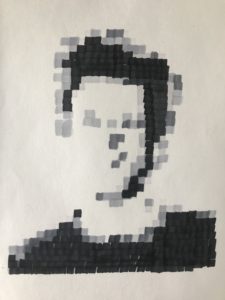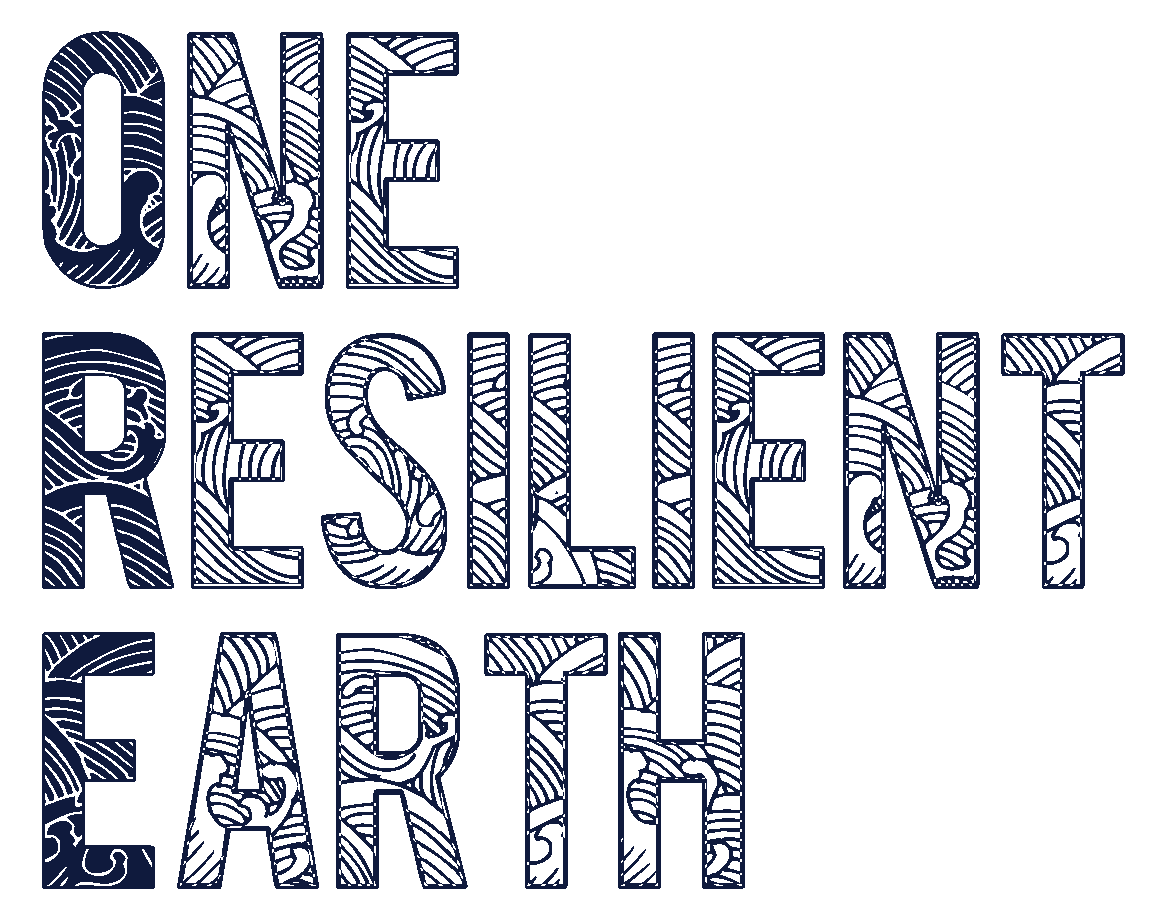The Open Mind Series is a selection of interviews with artists, designers and other ‘creators’ from around the world giving us an insight into how they see the world now and tomorrow. No qualifications required. No taboo. No right or wrong. Just openness. And artworks.
How do you imagine the world in 20 years?

How do you imagine the world in 1000 years?

What a bold question and who could presume to answer this.
I imagine: individual countries are no longer governed or dominated but there is one “administration” for the whole globe. It is not politicians who govern, but artificial intelligence. Human vanity and power obsession are thus eliminated. Computers do not think nationally, but rationally; global, joint action is the basis of AI’s algorithm. Also the economy is controlled by AI. What counts is rationality, not lobbyism, not individual (profit) interest. The price of a thing is calculated as a whole, not as at present, without including the “additional costs”. As a result, it is not profit maximization but symbiosis between human beings, nature, economy and culture that is decisive. Since politics and economy are machine-controlled, work as life-support is, so to speak, no longer necessary; man is left with leisure, or in other words, there is no longer any distinction between work and leisure. There is room for what constitutes humanity: philosophy, music, art, creativity. Since the legislative and judicial branches are controlled by AI, without human error, the executive branch is omitted. There is no need for police, military or borders, because there is justice between the countries and the citizens. Possession is regulated, not out of control like today. So “having” alone no longer creates identity. At the moment, and because the eternal fear of a potential loss is no longer existing, humanity concentrates on the constructive in all it forms. Animals are no longer eaten, because all animal food is synthetically produced, to be easier, cheaper, tastier. Technology has made it possible to make travelling energy neutral. The same applies to daily needs, such as heating, infrastructure, which are obtained from sun, wind and water, and which are not tradable as speculation. Art no longer has to be political, analytical, conceptual. In the year 3020, it is the task of art to satisfy the hunger for “sublimity” of an increased sensitive humanity liberated from work.
What is the plant, animal or object that most inspires you and how?

I could not give preference to any particular plant, animal or object. Different living things and artifacts fascinate in different ways, at different times.
At the moment I am especially impressed by wild plants, especially the edible ones, which exist around us in their thousands, but are not seen or perceived by many.
What quiet, unobtrusive beauty, what possibilities they offer us and what abilities are hidden in them, I am just discovering – a revelation. The complex symbioses, their ability to nourish, heal, delight us. It is not the exotic plants, but the blackberries on the fallow land, the wild garlic on the edge of the forest, the magnolia in the front garden of the neighbour, whose flowers can provide us with excellent chutney.
The closer one deals with it, and this surely applies to many plants, animals, objects, the more impressed one is, and the more consciously one wants to live according to these circumstances.
What is the emotion that drives you in your work?

When “making art”, all kinds of emotions and states of mind are queried. Positive ones, such as curiosity, joy, energy, thirst for knowledge, urge to explore, childishness, flow experiences, etc. but also negative ones, such as anger, rage, feelings of injustice, can strongly influence the artistic intention. It is interesting that even these actually destructive energies can be transformed into positive ones, that the sometimes somewhat pathetic sounding “creating” is deeply human.
What does community mean to you personally?

Until some time ago, “community” was still understood in a local context; in today’s “long-distance society”, or as Vilém Flusser calls it, “telematic society“, a community can also be spread around the globe. What makes it up is communication, sharing, reciprocity, etc.
In my artistic projects, communication is often in focus, whether as a net-based, global community directed, as in the projects of Remotewords which I founded together with Uta Kopp, where we put messages on roofs and “send” them around the globe through the satellites of Google Earth. For example, five words on five continents (Europe, Oceania, Africa, North America and Asia) have inscribed themselves into the globe as a coherent sentence: “One Earth Unites Many Worlds”.
But also very local performances such as “THE_VEGAN_SCANNING_PRINTING_COOKING_PROJECT”, a media performance in which locally growing plants are scanned, digitally recorded, printed out and finally presented as “images” on the exhibition walls. As part of the artistic action, cooks process the “vegan material” into dishes and then serve them to the guests – projects that only work in and through community.
How do you connect with the Earth today?

We have completely lost our connection to Earth in the last decades. That’s why Bruno Latour pleads for the terrestrial, a return to consciousness. That the globe is the measure of all things, and everything must be tuned to the earth.
In my project “0.0064 Megapixel – Planet Earth Is Blue And There’s Nothing I Cant’t Do” I try to reestablish this connection to Earth very consciously, and project the world-famous photograph “Earthrise”, which was taken analogously during the orbit of the moon by the American Apollo 8 mission in 1968, into physical space, in the middle of the forecourt of the Bundeskunsthalle in Bonn. A 20 x 20 m large floor sculpture that enables every visitor to consciously feel part of this fragile earth, and which eliminates the distance between self-perception, inner world and outer world, between earth and universe.
There are many things one would like to change: first, the globe must and can become 100% energy neutral; second, food, health and education must and can become the same on all continents; third, at least three-quarters of the earth must be declared nature reserves, including the oceans; fourth, capitalism must be tamed; fifth, the myth of eternal growth must be exposed; sixth, the diversity of languages and individuality must be recognized and protected.
One could go on endlessly and formulate whole manifestos on the UN’s SDGs.
Many of my projects are therefore also dedicated to the topic of climate. In the installation “Aletsch_Drag&Drop”, on the roof of the Swiss television SRF, from where the weather is presented daily, the image of the Aletsch Glacier, the largest glacier in the alpine region, is shown on a PVC foil as a warning symbol of the melting of the ice and as a testimony to the undeniable, progressive global warming.
Art can always be a means of reflection. Nevertheless, man himself must act.
What is your dream for the arts world?

The best thing that could happen to art would be a decoupling of the systems “art” and “economy”. The problem of art, since the invention of the art market, is that in many cases the intention of artists and art consumers have adopted a maxim of the system “economy”: Profit maximization. The maxim of art, however, must mean and constitute maximization of knowledge, sublimity, thinking, aesthetics, experience, everything that culture can be. Unfortunately, the current state is freely adapted from Bertolt Brecht: “First comes food, then comes morality.” But with one difference: You notice that these lines were written during the depression of the 1920s, because the necessity of food from back then has today given way to a greed that goes far beyond hunger.
Art must be treated as a basic human right, there should be a basic income for artists so that they work freely and not dependent on a market or influenced by taste.
What’s the best thing on earth?
0,0064 Megapixel – Planet Earth Is Blue And There’s Nothing I Can’t Do, Bundeskunsthalle Bonn 2018
The best thing on Earth is Earth itself.

